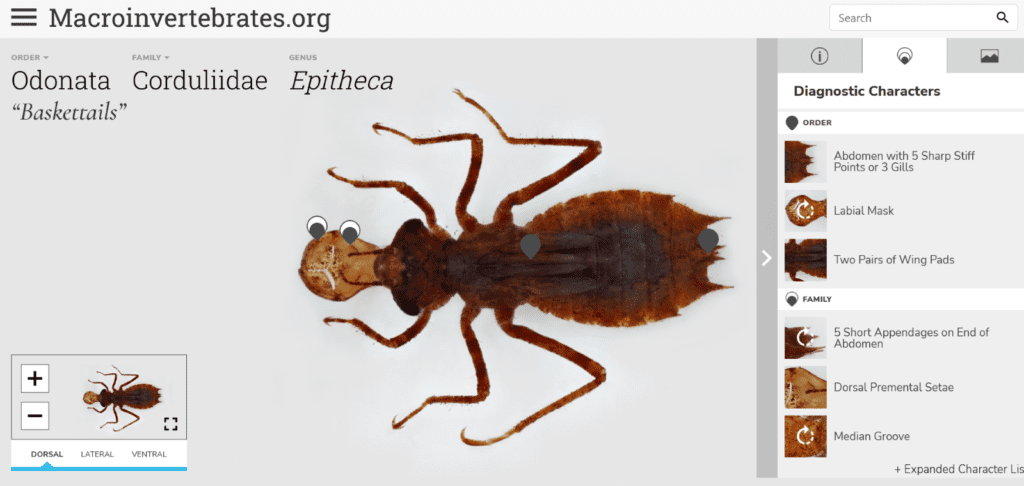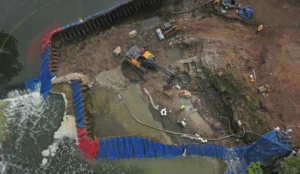Besides fish, there are many other creatures living in our local rivers and streams. Look closer and you’ll find little creatures under rocks or hiding in the vegetation. These bugs, that we can see without the use of a microscope, are also called macroinvertebrates by stream biologists. From breaking down dead plant material to scraping algae off rocks to becoming a tasty treat for fish, reptiles, amphibians, and even birds, macroinvertebrates fill many important roles in the stream ecosystem.

Macroinvertebrates.org is an incredible resource. Explore the site to see up-close photos and discover quirky adaptations of macroinvertebrate families you might find in your local streams.
Amazing Adaptations of Macroinvertebrates
Each group of macroinvertebrates fills a niche in the ecosystem and they are specially adapted for the part of the stream they live in. Here’s a few unique adaptations that allow macroinvertebrates to thrive in their niche:
Flat bodies and hooks for feet: Many mayfly species live in the fast-flowing rifles. Their bodies are relatively flat and they have hooks on their feet so they don’t get dragged downstream in the current.
Caddisfly craftsmanship: Some caddisflies hide from predators by retreating into a protective case they create from things in the stream. The materials they make the cases out of are specific to the family of caddisfly. Some use pieces of dead plant stems to make a stacked case and others glue together tiny pebbles or sand grains.


Scuba and snorkel: Water boatman carry air bubbles that allow them to breathe underwater, just like a scuba diver with an air tank. Other kinds of macroinvertebrates have snorkel-like breathing tubes for getting oxygen from the air.
Always ready for fast food: Dragonfly larvae have a spoon structure for a bottom “jaw” that scoops outward and pulls in its prey in fractions of a second.


Macroinvertebrates and Water Quality
Many macroinvertebrates are sensitive to pollutants in the water or lack of appropriate habitat, while others can live in almost any pool of water. This is why we can learn a lot about the health of a stream by looking to see which macroinvertebrates are living in it. A stream with good water quality and diverse habitats—like fast flowing riffles, deep pools and slow, quiet areas, differing sizes of gravel and rocks, and aquatic vegetation—will support a diverse community of macroinvertebrates that in turn supports a diverse array of fish, reptiles, amphibians and birds further up the food chain.
So, the next time you are checking out your local stream, look closer. Pick up a rock and see who’s calling it home.




